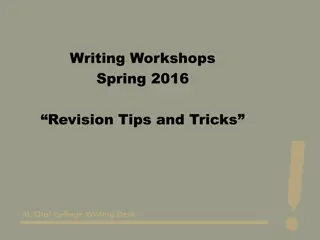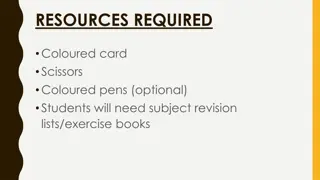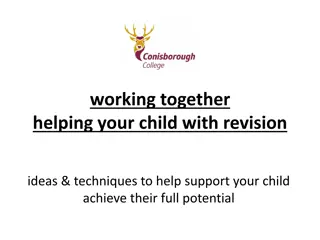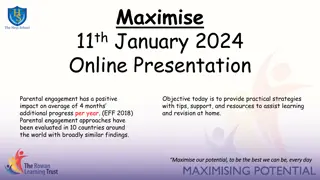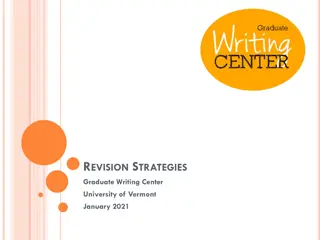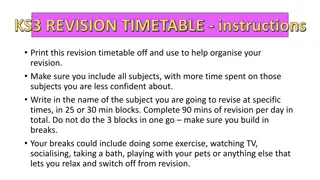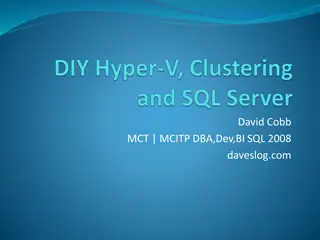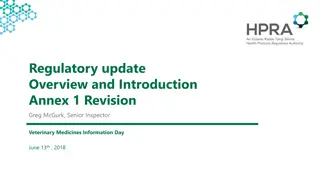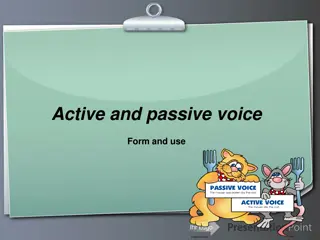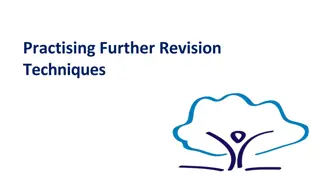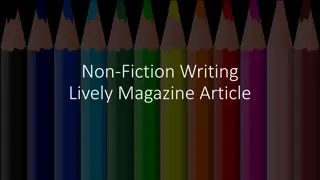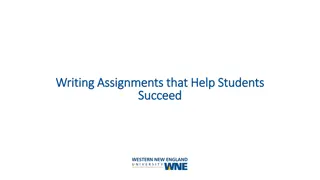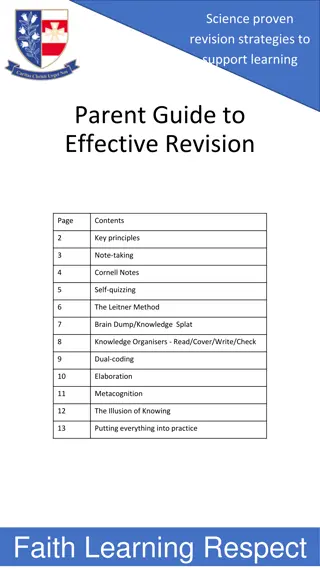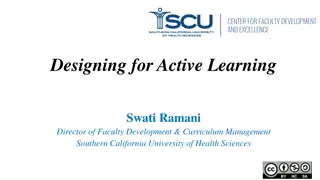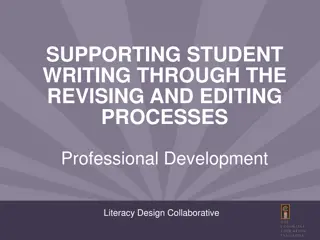Enhancing Your Writing through Active Revision Techniques
Explore the concept of revision as active listening through insights from Elizabeth Jarrett Andrew. Discover essential questions and exercises to deepen your understanding of your writing drafts, uncover untapped potential, and engage your mind's eye in capturing vivid details for compelling scenes.
Download Presentation

Please find below an Image/Link to download the presentation.
The content on the website is provided AS IS for your information and personal use only. It may not be sold, licensed, or shared on other websites without obtaining consent from the author. Download presentation by click this link. If you encounter any issues during the download, it is possible that the publisher has removed the file from their server.
E N D
Presentation Transcript
Revision as Active Listening Excerpts from Living Revision, by Elizabeth Jarrett Andrew
Elizabeth Jarrett Andrew I recently learned a new way to understand the word respect. The roots are the same as revise to see again. The surprising similarity between these words shines a fresh light on revision: When we see something anew, we come to respect it. Each new perspective, each layer of understanding, deepens our regard.
Essential Questions Why are you writing this? What is important to you in this project? What is challenging? Where are you stymied? If you were speaking to yourself as a friend, what would you tell yourself about this draft? What is working and what isn t?
Elizabeth Jarrett Andrew Consider a draft you re currently working on. List at least ten questions you have, not about the crafting of the piece but about its content; questions such as: What was I feeling in this scene? What history led to this moment? In other words, what don t you yet know about the material? Choose one question and write in response.
Exercise: The Unwritten Part In the center of a blank sheet of paper, draw a circle and write inside what you believe your piece is about.
Whats NOT in your project yet? In a ring encompassing this circle, note the contents of your current draft events, reflections, anecdotes. Then draw another ring encompassing both. Here make note of other material that is part of your story but not in your draft. Ask: What material is unwritten but relevant? What more might this be about? What does this story remind me of? What else do I think about this topic? What questions arise? Then choose one fresh idea and begin writing, not yet worrying where it will fit into your piece.
Exercise: The Minds Eye When working on a significant scene, pause. Close your eyes. Imagine yourself in that place and moment. What do you smell? See? Hear? Allow your subconscious to draw you to small details. Pay particular attention to anything that bears emotional weight. Note these details in your project journal first, where you have freedom to explore them without concern for disrupting the draft.
Exercise: Generating Details Choose a scene (or moment in a poem), then generate lists of as many details as you can within that scene. Give columns to each of the senses. Then scan your lists for telling details that might reveal your scene s inner life. Incorporate them in the draft.
Exercise: Dialogue with an Image Choose an image from your draft (an object, a view, a freeze-frame from a scene) that has energy for you. ..Writing quickly, without thinking, dialogue with this image. Allow it to speak in its own voice. Ask it what it wants. Allow it to ask questions. Afterward, ask, If this image had its say, what would your piece be about?
Articulating the Heartbeat Before I begin revising, I attempt to articulate my project s heartbeat in one or two simple sentences on a bright sticky note and place it over my writing desk. This note steers me. With every sentence, paragraph, section, and chapter I rewrite, I ask, how is this serving my heartbeat? Even an inaccurate naming provides guidance. This heartbeat is a statement of purpose a soft intention we can follow or shift.
Exercise: Listen to Your Literal Heartbeat Pause for a moment. Place your hand on your heart. Breathe. Listen to your breath. Feel your heartbeat. Attend to the mysterious, unified workings of your body. Then imagine placing the essence of your book near your heart. The heartbeat of your book is born of your heartbeat. Hold it there for a few minutes. Then write: In what ways is your project an extension of your own life force?
Tips: Naming the Heartbeat Use working titles and headings. Titles usually need revision; the longer we work with them, the more exact they can become. Can your working title point both to the outer story and to the inner story? Working titles steer our revisions. On a sticky note, write a simple sentence or question articulating your project s heartbeat. What is your piece essentially about? Be sure to include both the outer and the inner stories. Post this above your writing desk and refer to it often, asking, how is my current work serving my heartbeat? Periodically revisit and revise this sticky note.


